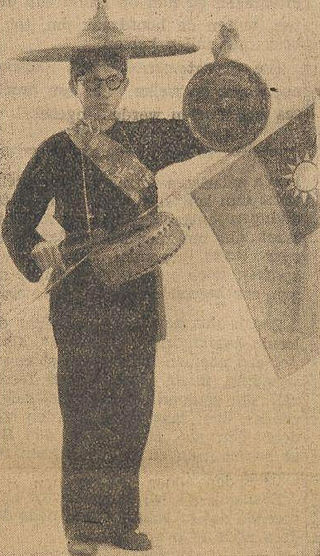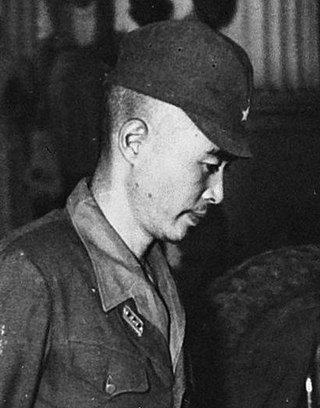Related Research Articles

A hell ship is a ship with extremely inhumane living conditions or with a reputation for cruelty among the crew. It now generally refers to the ships used by the Imperial Japanese Navy and Imperial Japanese Army to transport Allied prisoners of war (POWs) and rōmusha out of the Philippines, the Dutch East Indies, Hong Kong and Singapore in World War II. These POWs were taken to the Japanese Islands, Formosa, Manchukuo, Korea, the Moluccas, Sumatra, Burma, or Siam to be used as forced labor.

Kinu (鬼怒) was the fifth of the six ships completed Nagara-class light cruiser in the Imperial Japanese Navy, named after the Kinu River in Tochigi prefecture Japan. She was active in World War II in various campaigns in Malaya, the Dutch East Indies and New Guinea before being sunk by United States Navy carrier-based aircraft in the Philippines in 1944.

The Empire of Japan occupied the Dutch East Indies during World War II from March 1942 until after the end of the war in September 1945. It was one of the most crucial and important periods in modern Indonesian history.
Herman Thomas Karsten was a Dutch engineer who gave major contributions to architecture and town planning in Indonesia during Dutch colonial rule. Most significantly he integrated the practice of colonial urban environment with native elements; a radical approach to spatial planning for Indonesia at the time. He introduced a neighborhood plan for all ethnic groups in Semarang, built public markets in Yogyakarta and Surakarta, and a city square in the capital Batavia. Between 1915 and 1941 he was given responsibility for planning 12 out of 19 municipalities in Java, 3 out of 9 towns in Sumatra and a town in Kalimantan. He received official recognition from both the government through his appointment to the colony's major Town Planning Committee and by the academic community with his appointment to the position of Lecturer for Town Planning at the School of Engineering at Bandung. He died in an internment camp near Bandung in 1945 during the Japanese occupation of the Dutch East Indies.

Willem Arnold Alting was a Dutch colonial administrator who served as Governor-General of the Dutch East Indies from 1780 to 1797.

Cornelis Janszoon Speelman was Governor-General of the Dutch East Indies from 1681 to 1684.

Gerardus Philippus "Gerard" Helders was a Dutch politician and diplomat of the defunct Christian Historical Union (CHU) party now merged into the Christian Democratic Appeal (CDA) party and jurist.

Sultan Hasanuddin (Sultan Hasanuddin Tumenanga Ri Balla Pangkana; was the 16th Ruler of The Sultanate of Gowa as Sombaya Ri Gowa XVI from 1653 to 1669. He was proclaimed as Indonesian National Hero on 6 November 1973. The Dutch called Sultan Hasanuddin "the Rooster of the East" as he was described as aggressive in battle.
The South Sulawesi Campaign was a campaign during the Indonesian National Revolution. It was a counter-insurgency offensive of the special forces of the KNIL against Indonesian infiltrations from Java and pro-Indonesian local militias. It was masterminded by the controversial Raymond Westerling, a captain in the KNIL. Westerling's operation, which started in December 1946 and ended in February 1947, succeeded in eliminating the insurgency and undermining local support for the Republicans by instituting summary executions of suspected enemy fighters.

Freemasonry was introduced by the Dutch to what is today Indonesia during the VOC era in the 18th century, and spread throughout the Dutch East Indies during a wave of westernisation in the 19th century. Freemasons originally only included Europeans and Indo-Europeans, but later also indigenous people with a Western education.
19 Squadron ML-KNIL, also known as No. 19 Squadron RAAF, was a transport and communications unit of the Royal Netherlands East Indies Army Air Force (MK-KNIL), formed in Australia during the final stages of World War II. The squadron was formed as a Dutch unit in late 1944 from two transport flights that had previously been based in Brisbane and Melbourne, and which had run supplies to joint Australian-NEI combat squadrons in the Northern Territory and in West Papua. Upon formation the squadron was based at Archerfield, near Brisbane. In 1945, it was transferred to the Royal Australian Air Force (RAAF), but returned to Dutch control in 1947 and subsequently took part in operations during the Indonesian National Revolution.

Theodorus Hendrikus "Theo" Bot was a Dutch politician and diplomat of the defunct Catholic People's Party (KVP) now merged into the Christian Democratic Appeal (CDA) party and jurist.
Tjideng was a Japanese internment camp for women and children during the Second World War, in then Batavia.

Louis Victor Wijnhamer, better known as Pah Wongso, was an Indo social worker popular within the ethnic Chinese community of the Dutch East Indies, and subsequently Indonesia. Educated in Semarang and Surabaya, Pah Wongso began his social work in the early 1930s, using traditional arts such as wayang golek to promote such causes as monogamy and abstinence. By 1938, he had established a school for the poor, and was raising money for the Red Cross to send aid to China.

Rumah Cililitan Besar, also known as simply Cililitan Besar or Lebak Sirih, is a former Dutch colonial country house located in Kramat Jati, Jakarta. It was known in Dutch as Landhuis Tjililitan Besar. It is located next to the complex of Soekanto Indonesian National Police Hospital. The architecture style of the building is a prototype for a late 19th century Dutch country house style known as the transitional Dutch Indies style.

SS Op Ten Noort was a passenger steamship that was launched in the Netherlands in 1927. She was built for the Koninklijke Paketvaart-Maatschappij, who operated her in the Dutch East Indies. Op Ten Noort means "Up North".

Naval Base Borneo and Naval Base Dutch East Indies was a number of United States Navy Advance Bases and bases of the Australian Armed Forces in Borneo and Dutch East Indies during World War II. At the start of the war, the island was divided in two: British Borneo and Dutch East Indies. Both fell to the Empire of Japan, Japan occupied British Borneo and the Dutch East Indies in 1942 until 1945.

Kenichi Sone, also rendered as Kenitji Sonei and variants, was an Imperial Japanese Army captain during the Pacific War. Following the Japanese conquest and occupation of the Dutch East Indies, he was the commander of the 10th Battalion prisoner of war camp from September 1942 to February 1944 and of the Tjideng civilian internment camp from April 1944 to June 1945.
References
- ↑ "BBC - WW2 People's War - Kampong Makassar" . Retrieved 1 June 2013.
- ↑ "Bathing Room in the Women's Quarter of the Makassarese Village Near Master Cornelis in Batavia - World Digital Library" . Retrieved 1 June 2013.
- ↑ "Zoeken in Indische kamparchieven - Indischekamparchieven" . Retrieved 1 June 2013.